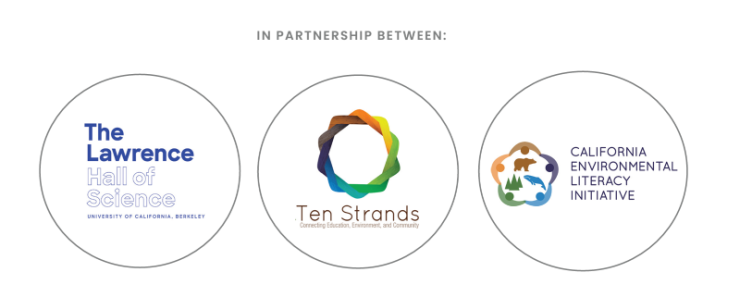Peaks and Valleys: A landscape study of environmental literacy implementation in and out of California’s TK-12 classrooms
By Jedda Foreman, Melissa Collins, Andra Yeghoian, Karen Cowe, Devin Cavero, and Alex Sanchez
Over 80% of California educators and administrators desire further integration of environmental literacy in classrooms and outdoor spaces: New report reveals insights on how.
In partnership with the California Environmental Literacy Initiative and Ten Strands, the Center for Environmental Learning at the Lawrence Hall of Science, UC Berkeley, examined how much environment-based education takes place in California classrooms and outdoor spaces and how well educators and administrators feel supported in integrating environmental learning across subjects and grade levels. The report, Peaks and Valleys: A landscape study of environmental literacy implementation in and out of California’s TK-12 classrooms, provides a baseline for the state’s educators and policymakers, who have identified environmental literacy as a key learning objective for all of California’s TK-12 students. It also highlights four state-wide promising trends and five opportunities.
One of the most promising findings is that there is evidence that teachers at every grade level and within every subject area have successfully integrated environmental literacy into their classroom instruction. This suggests that implementing environment-based education across subject matters and grade levels can lead to positive outcomes. Therefore, instead of continuing to demonstrate that environment-based education leads to positive outcomes, we can focus on finding ways to share, iterate, and scale what has already been tried and tested.
A key opportunity in the report and call to action is for counties, districts, and schools to be in authentic partnerships with local Native communities. Findings reveal that educators in the study express their lowest confidence in incorporating California Native perspectives and/or Traditional Ecological Knowledge into their teaching. This could be improved through more partnerships with Native communities for professional learning for educators and direct experiences for students.
While there are many promising trends and room for growth in this dataset, the most promising of all is that 83% of educators and 84% of administrators want more environmental literacy! To meet this desire, educators and administrators need additional curricula and instructional materials that integrate environmental literacy — in and out of the classroom — and time to engage in professional learning experiences that build capacity for environmental literacy. Given the promise and interest in environmental literacy, the report suggests potential for impactful change.
We know the benefits of environment-based education are too good to ignore. Let’s use this report as a catalyst to ensure that all youth in California have access to high-quality environmental literacy experiences throughout their TK-12 education.
To learn more, preview the findings in the executive summary or download and read the full report.
Reach out to environmentallearning@berkeley.edu for more information.





